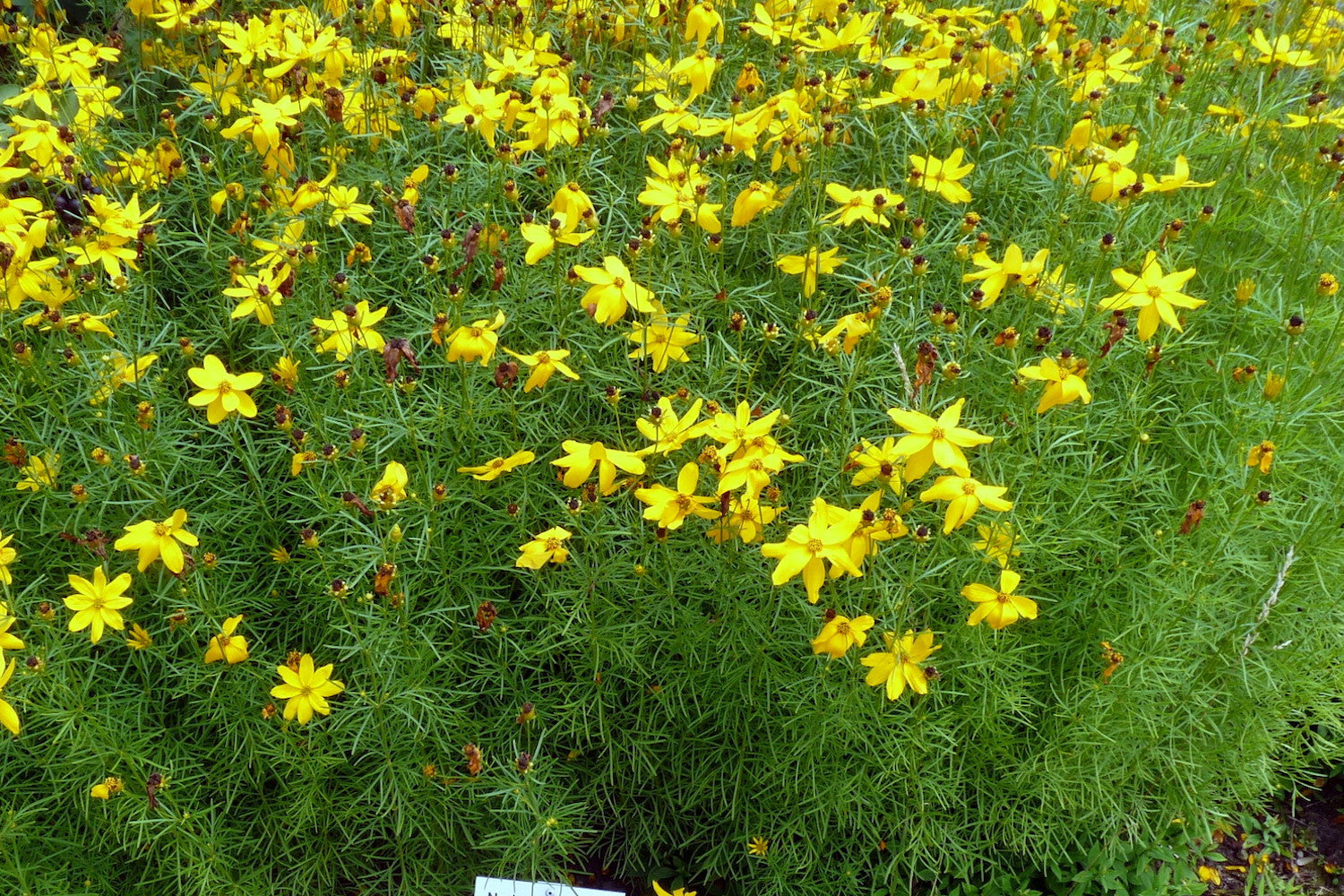Coreopsis verticillata 'Grandiflora'
Approx. 0.5 litre pot
About this cultivar:
Coreopsis verticillata 'Grandiflora' has a compact habit but is a taller cultivar with finely divided leaves and deep golden-yellow daisies. The species name means having whorls in reference to the leaves. It has the Royal Horticultural Society Award of Garden Merit who, in 2001 said 'Particularly large flowers over a long flowering period. Fine filigree foliage'.
- Position: Full sun, partial shade
- Soil: Almost any soil
- Flowers: July, August, September, October
- Other features: Royal Horticultural Society Award of Garden Merit (RHS AGM)
- Hardiness: H5 - Hardy in most places throughout the UK even in severe winters (-15 to -10°C)
- Habit: Clump forming
- Foliage: Deciduous
- Height: 50 - 75 cm (1.5 - 2 ft)
- Spread: 50 - 75 cm (1.5 - 2 ft)
- Time to full growth: 2 to 5 years
- Plant type: Herbaceous Perennial
- Colour: Yellow, green
-
Goes well with: Agapanthus, Kniphofias, Crocosmias, or Monarda. Try it with grasses such as Stipa. We grow ours in between 'med' plants such as Nepeta and Salvia.
About this genus:
Coreopsis species are perennial wildflowers recognized around the world for being tough, durable garden plants. They are members of the daisy family. The name Coreopsis is derived from the Greek word koris, meaning "tick" or "bug"and opsis meaning "view" - because the seed looks like a bug: hence the common name tickseed.
In full sun or partial shade hey produce hundreds of bright yellow flowers...some in summer and others in autumn. It is a tough, low maintenance plant that grows in almost any soil. This easiness gives it a reputation as a "beginner plant" - but we think every pro should have them! Every few years it is a good idea to divide them.
The fine textured foliage of Coreopsis pairs very well with coarser textured plants such as Agapanthus, Kniphofias, Crocosmias or Monarda. Because it can tolerate drought try it with grasses such as Stipa. We grow ours in between 'med' plants such as Nepeta an Salvia. Coreopsis looks best in large groups, or woven among other perennials. The flowers also attract butterflies and make great cut flowers.


